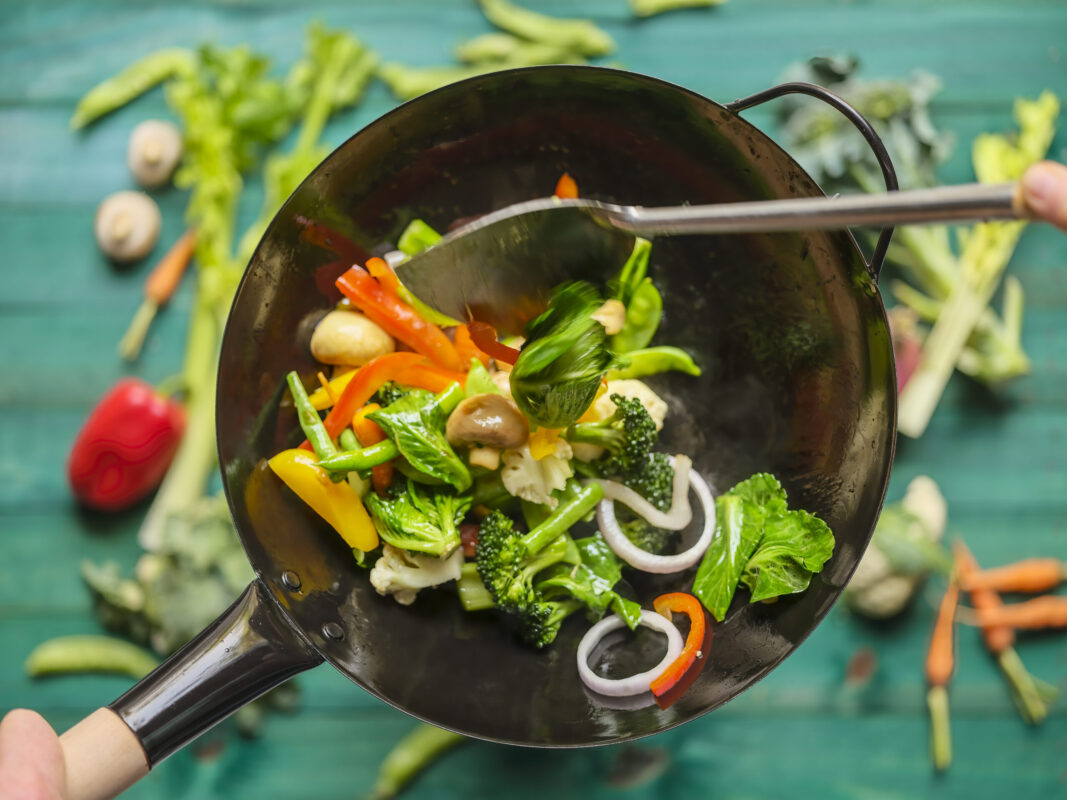Every trip to the farmers market has one thing in common: leftovers. You make a few meals, but then you end up with spare radishes, green onions or peas that you aren’t sure what to do with.
Here are 6 healthy, veggie-forward dishes you can make with any leftover produce.
1. Frittatas
A frittata is a fool-proof breakfast food that can also double as lunch or dinner — especially when paired with a light salad. Frittatas are easier to make than omelettes (all you do is stir) and simpler than quiche because they’re crustless.
A few tips:
- Use cherry tomatoes, corn, zucchini and squash raw because they’ll cook fully during baking.
- Saute ingredients such as mushrooms, onions, fennel, carrots and peppers first to ensure they aren’t too crunchy in your finished frittata.
- Don’t be afraid to throw leftover cooked greens in; just drain any liquid first.
- Add sturdy herbs like rosemary and thyme before you bake; if you’re working with basil, cilantro or parsley, save those to sprinkle on top after baking.
2. Marinated salad
Nothing is simpler than a marinated salad: just chop, toss and refrigerate.
Put it together:
- Thinly slice root veggies such as turnips, beets and radishes so the dressing can sink in.
- Chop large pieces of tender produce — peaches, watermelon, tomatoes, cucumbers, squash — and add those to the marinade last.
- Run sliced, raw onions under cold water for a few minutes to remove the bitter bite.
- Dress veggies with bottled vinaigrette or make a dressing using citrus (lemon, lime, orange) whisked with a little bit of oil, salt and herbs (basil, cilantro, mint).
Let the salad sit for 15-45 minutes in the fridge. The heartier the vegetables, the longer they can marinate without getting soft. Kale, for example, is stiff enough to marinate overnight.
3. Ratatouille
The word ratatouille comes from a French word that means “to stir up,” which is all you have to do to make this stewed dish. Traditional ingredients include zucchini, squash, tomatoes, onions, peppers and herbs, but you can easily throw in scallions, mushrooms, potatoes or whatever you have on hand.
Tip from Chef Michael Vetro, executive chef of culinary operations at St. Jude Children’s Research Hospital in Memphis:
- If you want to eat ratatouille as a side dish, cook it for a shorter amount of time so the vegetables keep their texture.
- If you want to use it as a stew or sauce, cook it longer and serve it on fish or meat.
4. Soup
Vegetable soup is one of the most versatile dishes to have on your roster because any vegetable works.
Add ingredients in this order:
- Start by sauteing aromatics, or vegetables and herbs with flavors that need to be “unlocked” by cooking in oil or butter. Aromatics include garlic, ginger, onion, celery and carrots. If you’re using fennel, leeks or peppers, you can also brown those.
- If you’re making a broth-based soup, bring everything to a boil and then reduce to a simmer until everything is cooked through. If you’re making a roux- or dairy-based soup (chowder, gumbo), avoid boiling as that can cause your soup to curdle or burn.
- Be sure to add any greens, okra or potatoes before you boil so they cook through. Wait to add delicate ingredients such as corn, tomatoes, squash or cooked peas until you reduce to a simmer so they don’t get mushy.
5. Stir fry
A stir fry not only allows you to use up extra vegetables; it also makes use of other leftovers such as rice, eggs, herbs and protein.
Be sure to:
- Cook things in the same order you would a frittata, with fresh herbs added at the end.
- Throw a handful of chopped greens in to add texture, earthiness and fiber.
- Season with salt and pepper as you go, and only add soy sauce at the end. This allows the flavor of the vegetables to shine and reduces the amount of sodium you’ll use.
- Add chopped, cooked protein near the end. Leftover barbecue, roasted chicken, cooked tofu or even stew meat are good additions.
6. Pesto
Pesto is especially versatile once you understand its components. Any pesto is a combination of:
- Herbs or greens
- Nuts
- Hard cheese
- Garlic, salt and olive oil
Traditionally the combination is basil, pine nuts, parmesan and olive oil, but you can pretty much search “pesto” plus any ingredient online to find a recipe that will work. Use the finished product on pasta, over meat or swirled into yogurt, mayonnaise or sour cream to make a condiment.
Try any combination of the following
- Greens: Carrot tops, fennel, kale, watercress, broccoli rabe
- Herbs: Basil, mint, cilantro, parsley, marjoram, chives, scallions
- Nuts: Pine nuts, almonds, walnuts, pecans, peanuts
- Cheese: Parmigiano-Reggiano, Grana Padano, Pecorino
More articles on making the most of the farmers market:
- What’s in Season in Summer in Tennessee with St. Jude
- Tennessee Herb Guide
- Farmers Market 101: 9 Ways to Shop Smarter
Get more information about specific health terms, topics and conditions to better manage your health on bcbst.com. BlueCross BlueShield of Tennessee members can access wellness-related discounts on fitness products, gym memberships, healthy eating and more through Blue365®. BCBST members can also find tools and resources to help improve health and well-being by logging into BlueAccess and going to the Managing Your Health tab.


